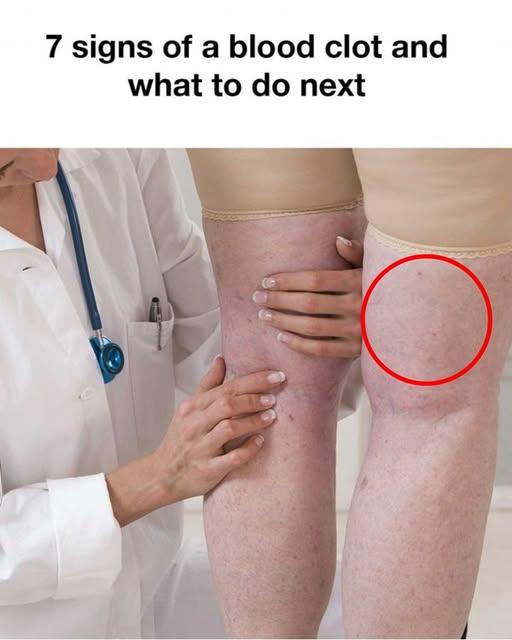Blood clots, medically known as thrombosis, affect nearly a million Americans annually, making it crucial to recognize their signs and symptoms. If left untreated, blood clots can lead to life-threatening conditions. This article delves into the nature of blood clots, their symptoms, and the importance of seeking prompt medical attention.

Understanding Blood Clots
A blood clot is a mass of blood that forms when the blood’s liquid components thicken and clump together. While clotting is a natural response to injury, preventing excessive bleeding, clots that develop without injury can pose serious health risks. These clots can obstruct blood flow, leading to conditions such as deep vein thrombosis (DVT) and pulmonary embolism (PE).
Deep Vein Thrombosis (DVT)
DVT occurs when a blood clot forms in a deep vein, typically in the legs. Recognizing the symptoms is vital for early intervention. Common signs include
Swelling: Noticeable enlargement in the affected leg.
-
Pain or Tenderness: Often starting in the calf, this discomfort may feel like cramping or soreness.
-
Skin Discoloration: The skin over the clot may appear red or have a bluish hue.
-
Warmth: The area around the clot may feel warmer than the surrounding skin.
It’s important to note that some individuals with DVT may experience no symptoms, making the condition harder to detect.
Pulmonary Embolism (PE)
A PE happens when a clot breaks loose and travels to the lungs, blocking blood flow. This condition can be fatal if not treated immediately. Symptoms to watch for include:
-
Sudden Shortness of Breath: Difficulty breathing without any apparent cause.
-
Chest Pain: Sharp, stabbing pain that may worsen with deep breaths.
-
Rapid Heart Rate: An unusually fast pulse.
-
Coughing: Sometimes producing bloody mucus.
Risk Factors
Several factors can increase the likelihood of developing blood clots:
-
Prolonged Immobility: Extended periods of inactivity, such as long flights or bed rest, can slow blood flow, leading to clot formation.
-
Surgery or Injury: Procedures or injuries, especially those involving the lower extremities, can heighten clot risk.
-
Certain Medical Conditions: Conditions like cancer, heart disease, and inherited clotting disorders can predispose individuals to thrombosis.
-
Lifestyle Factors: Smoking, obesity, and the use of birth control pills or hormone replacement therapy can elevate risk.
When to Seek Medical Help
If you experience symptoms indicative of DVT or PE, it’s imperative to seek medical attention promptly. Early diagnosis and treatment can prevent severe complications. Healthcare providers may use ultrasound, blood tests, or imaging studies to confirm the presence of a clot.
Prevention Tips
Taking proactive measures can reduce the risk of developing blood clots:
-
Stay Active: Regular physical activity promotes healthy blood circulation.
-
Manage Weight: Maintaining a healthy weight decreases strain on the circulatory systemAvoid Smoking: Smoking cessation lowers the risk of clot formation.
-
Stay Hydrated: Proper hydration keeps blood viscosity at optimal levels.
-
Follow Medical Advice: If prescribed, take anticoagulant medications as directed, especially after surgeries or during prolonged immobility.
Understanding the signs and symptoms of blood clots is vital for early detection and treatment. By recognizing the warning signs and adopting preventive measures, individuals can significantly reduce their risk and ensure better health outcomes.





